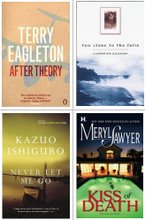The twentieth century was a time of great expansion of representational modes. The development of photography, sound recording, moving images, movies, radio, and television has led to our culture being increasingly dominated by human-made semiotics. However, during most of the past century, the need for elaborate skills and equipment meant that cost limited authorship in these new representational modes, as it did for the more established mode of print. Despite, or perhaps because of, these gatekeepers, audiences were educated in these new representational modes simply by passive immersion. These new modes were not widely or systematically studied in how they represented (rather than simply as crafts to be learned for a limited few producers/authors) until the last quarter of the past century.
In the twenty-first century we (and our students) are in Ong’s “secondary orality” as more and more of us take in information holistically from the semiotic sea that surrounds us, rather than analytically and reflectively from printed text. At the same time, the representational gatekeepers of expensive complex equipment and skills have been largely removed. The ubiquitous computer and Web have created tools that are increasingly “affordable” and “user-friendly” which allow us (and our students) to individually create in the new representational modes developed in the twentieth century - photography, sound recording, moving images, movies, radio, and television, - as well as in the traditional alphanumeric print. And we can publish our work online to a worldwide (potential) audience.
How do we teach (and test) in this rapidly evolving semiosis? How do we shape curriculum for digital natives while we are still immigrating into the digital world ourselves? Are our students thinking and/or learning differently than we do or did? And if so, how? Is a photographic essay “equal” to a word-processed essay for teaching and/or for showing a student’s knowledge? And what about a sound and/or video documentary? Will our students learn more or more deeply from such representational modes than from text? Even if we focus exclusively on written text, as I will, what are the changes in writing brought by word-processing and the Web?
The computer is not a typewriter and the Web is not a collection of books. Teaching academic writing and business communication currently demands teaching the tool as well as the process, and teaching the visual as well as the verbal impact of structuring language. I believe we teachers of writing (and teachers using writing) must step off the dock of past practices into our digital boats and launch ourselves into this shifting semiosis.
After many years of teaching using the chalkboard and overhead, I was pushed into teaching academic writing and business communications using the computer and Web. For 10 years now I have been teaching Ontario post-secondary students, both college and university, how to communicate using the online computer – and learning from them. Since the late Nineties, I have been teaching using a Course Management System where I develop materials and then my students access them online, and in this process teach me how to teach online. In the last three years, I have seen radical changes in how the young, even the computer-reluctant young, combine writing and the computer. I have been learning about this new curricular space and how to shape it using the knowledge of the digital natives I encounter and helping those around me, whether labeled “teacher” or “student” to navigate in and through this shifting semiosis.

